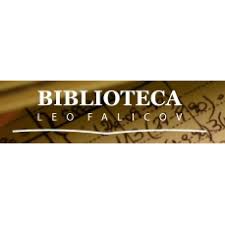Materiales para remediación de aguas: estudio comparativo de la retención de metales por columnas de calcita e hidroxiapatita.
Material type: Computer filePublication details: 2001.Description: 80 pDissertation note: Tesis para optar al título de Magister en Ciencia y Tecnología de Materiales. Director/es: Cicerone, Daniel S.; Morando, Pedro J. Summary: Este trabajo explora la capacidad de retención de metales por materials sencillos, cuyas materias primas son minerales abundantes en la naturaleza, de bajo costo y escaso impacto ambiental. Para ello se cualifió y cuantifió la interacción de los metales Cd, Zn y Co con los materiales calcita (CaCO3) e hidroxiapatita [Ca5(PO4)3OH] a partir de experimentos en batch y en flujo continuo en un amplio intervalo de concentraciones de metales (4<pMe<8) y pH (6<pH<8,6). Se caracterizó por análisis químico, difracción de rayos X, espectroscopía IR y SEM la naturaleza química y física de dos muestras comerciales de calcita (CA) e hidroxiapatita (HAP). Dada la naturaleza del proceso de sorción se puso especial cuidado en la caracterización de las propiedades superficiales de estos materiales (área BET, movilidad, EDAX). Los experimentos batch mostraron que la secuencia de afinidad de los metales es Cd>Zn>Co para CA y Cd>ZnSummary: This work explores the retention capacity of heavy metals by simple materials, developed from abundant minerals in nature, with low cost and minimum environmental impact. In order to accomplish this objective, this study qualifies and quantifies the interaction of Cd, Zn and Co with calcite (CaCO3) and hydroxyapatite [Ca5(PO4)3OH] through batch and continuous flux sorption experiments in a wide range of metal concentrations (4<pMe<8) and pH (6<pH<8.6). Commercial samples of calcite (CA) and hydroxiapatite (HAP) have been characterized by chemical analysis, X-ray diffraction, infrared spectroscopy and scanning electron microscopy. Due to nature of the sorption processes, special care has been taken in the characterization of the surface properties of these materials by BET area, electrophoretic mobility and X-ray dispersive spectroscopy. Results from batch experiments showed that the affinities of the studied heavy metals for the CA and HAP surfaces followed the sequence: Cd>Zn>Co and Cd>Zn approximately iqual Co. The retention of heavy metals increased with pCa and pH. A non-ideal ion exchange mechanism (Me/Ca) describes the adsorption of Cd, Zn and Co onto CA. In the case of HAP, sorption of heavy metals involves both non-ideal ion exchange and specific adsorption (Me/Ca and ident to PO4O-Me). The pH dependence is indirect in CA and results from solubility changes (pCa increases with pH, and so thus sorption of Cd, Zn and Co). Continuous flux experiments show that the permeability (k) of HAP and CA are 1,88.10-7 and 3,26.10-9 cm2, respectively. The increase of Ca in the effluents reveals a significant contribution of the ion exchangemechanism; 100 per cent in case of CA, and up to 50 per cent for HAP. Fifteen grams of packed HAP allowed the treatment of 30 L of a contaminated (10-4 mol dm-3 co, 10-4 mol dm-3 Zn, 10-5 mol dm-3 Cd) eluent. the effluents had metal concentrations below the standard guidelines for potable water and were slightly enriched in P and Ca. The CA column (15 g of sorbent) allowed the treatment of 0,09 L of the above eluent; effluents have metal concentration velevls below those of potable water and are slightly enriched in Ca. Both materias, HAP and CA, can be used for heavy metal retention. The former has better performance for water treatment. This is due to: 1) its greater efficiency for the retention of Cd, Zn and Co (over two orders per gram of material); 2) its higher stability in a wide range o Ph (6<pH<9) and 3) its lesser pressure drop in packed columns arrays
Computer filePublication details: 2001.Description: 80 pDissertation note: Tesis para optar al título de Magister en Ciencia y Tecnología de Materiales. Director/es: Cicerone, Daniel S.; Morando, Pedro J. Summary: Este trabajo explora la capacidad de retención de metales por materials sencillos, cuyas materias primas son minerales abundantes en la naturaleza, de bajo costo y escaso impacto ambiental. Para ello se cualifió y cuantifió la interacción de los metales Cd, Zn y Co con los materiales calcita (CaCO3) e hidroxiapatita [Ca5(PO4)3OH] a partir de experimentos en batch y en flujo continuo en un amplio intervalo de concentraciones de metales (4<pMe<8) y pH (6<pH<8,6). Se caracterizó por análisis químico, difracción de rayos X, espectroscopía IR y SEM la naturaleza química y física de dos muestras comerciales de calcita (CA) e hidroxiapatita (HAP). Dada la naturaleza del proceso de sorción se puso especial cuidado en la caracterización de las propiedades superficiales de estos materiales (área BET, movilidad, EDAX). Los experimentos batch mostraron que la secuencia de afinidad de los metales es Cd>Zn>Co para CA y Cd>ZnSummary: This work explores the retention capacity of heavy metals by simple materials, developed from abundant minerals in nature, with low cost and minimum environmental impact. In order to accomplish this objective, this study qualifies and quantifies the interaction of Cd, Zn and Co with calcite (CaCO3) and hydroxyapatite [Ca5(PO4)3OH] through batch and continuous flux sorption experiments in a wide range of metal concentrations (4<pMe<8) and pH (6<pH<8.6). Commercial samples of calcite (CA) and hydroxiapatite (HAP) have been characterized by chemical analysis, X-ray diffraction, infrared spectroscopy and scanning electron microscopy. Due to nature of the sorption processes, special care has been taken in the characterization of the surface properties of these materials by BET area, electrophoretic mobility and X-ray dispersive spectroscopy. Results from batch experiments showed that the affinities of the studied heavy metals for the CA and HAP surfaces followed the sequence: Cd>Zn>Co and Cd>Zn approximately iqual Co. The retention of heavy metals increased with pCa and pH. A non-ideal ion exchange mechanism (Me/Ca) describes the adsorption of Cd, Zn and Co onto CA. In the case of HAP, sorption of heavy metals involves both non-ideal ion exchange and specific adsorption (Me/Ca and ident to PO4O-Me). The pH dependence is indirect in CA and results from solubility changes (pCa increases with pH, and so thus sorption of Cd, Zn and Co). Continuous flux experiments show that the permeability (k) of HAP and CA are 1,88.10-7 and 3,26.10-9 cm2, respectively. The increase of Ca in the effluents reveals a significant contribution of the ion exchangemechanism; 100 per cent in case of CA, and up to 50 per cent for HAP. Fifteen grams of packed HAP allowed the treatment of 30 L of a contaminated (10-4 mol dm-3 co, 10-4 mol dm-3 Zn, 10-5 mol dm-3 Cd) eluent. the effluents had metal concentrations below the standard guidelines for potable water and were slightly enriched in P and Ca. The CA column (15 g of sorbent) allowed the treatment of 0,09 L of the above eluent; effluents have metal concentration velevls below those of potable water and are slightly enriched in Ca. Both materias, HAP and CA, can be used for heavy metal retention. The former has better performance for water treatment. This is due to: 1) its greater efficiency for the retention of Cd, Zn and Co (over two orders per gram of material); 2) its higher stability in a wide range o Ph (6<pH<9) and 3) its lesser pressure drop in packed columns arrays
| Item type | Home library | Call number | Status | Barcode | |
|---|---|---|---|---|---|
|
|
Centro de Información Eduardo Savino | IT/T--70/01 (Browse shelf(Opens below)) | Not for loan | IT/T--70/01 |
Browsing Centro de Información Eduardo Savino shelves Close shelf browser (Hides shelf browser)
Cantidad de ejemplares: 1
Tesis para optar al título de Magister en Ciencia y Tecnología de Materiales. Director/es: Cicerone, Daniel S.; Morando, Pedro J.
Este trabajo explora la capacidad de retención de metales por materials sencillos, cuyas materias primas son minerales abundantes en la naturaleza, de bajo costo y escaso impacto ambiental. Para ello se cualifió y cuantifió la interacción de los metales Cd, Zn y Co con los materiales calcita (CaCO3) e hidroxiapatita [Ca5(PO4)3OH] a partir de experimentos en batch y en flujo continuo en un amplio intervalo de concentraciones de metales (4<pMe<8) y pH (6<pH<8,6). Se caracterizó por análisis químico, difracción de rayos X, espectroscopía IR y SEM la naturaleza química y física de dos muestras comerciales de calcita (CA) e hidroxiapatita (HAP). Dada la naturaleza del proceso de sorción se puso especial cuidado en la caracterización de las propiedades superficiales de estos materiales (área BET, movilidad, EDAX). Los experimentos batch mostraron que la secuencia de afinidad de los metales es Cd>Zn>Co para CA y Cd>Zn
This work explores the retention capacity of heavy metals by simple materials, developed from abundant minerals in nature, with low cost and minimum environmental impact. In order to accomplish this objective, this study qualifies and quantifies the interaction of Cd, Zn and Co with calcite (CaCO3) and hydroxyapatite [Ca5(PO4)3OH] through batch and continuous flux sorption experiments in a wide range of metal concentrations (4<pMe<8) and pH (6<pH<8.6). Commercial samples of calcite (CA) and hydroxiapatite (HAP) have been characterized by chemical analysis, X-ray diffraction, infrared spectroscopy and scanning electron microscopy. Due to nature of the sorption processes, special care has been taken in the characterization of the surface properties of these materials by BET area, electrophoretic mobility and X-ray dispersive spectroscopy. Results from batch experiments showed that the affinities of the studied heavy metals for the CA and HAP surfaces followed the sequence: Cd>Zn>Co and Cd>Zn approximately iqual Co. The retention of heavy metals increased with pCa and pH. A non-ideal ion exchange mechanism (Me/Ca) describes the adsorption of Cd, Zn and Co onto CA. In the case of HAP, sorption of heavy metals involves both non-ideal ion exchange and specific adsorption (Me/Ca and ident to PO4O-Me). The pH dependence is indirect in CA and results from solubility changes (pCa increases with pH, and so thus sorption of Cd, Zn and Co). Continuous flux experiments show that the permeability (k) of HAP and CA are 1,88.10-7 and 3,26.10-9 cm2, respectively. The increase of Ca in the effluents reveals a significant contribution of the ion exchangemechanism; 100 per cent in case of CA, and up to 50 per cent for HAP. Fifteen grams of packed HAP allowed the treatment of 30 L of a contaminated (10-4 mol dm-3 co, 10-4 mol dm-3 Zn, 10-5 mol dm-3 Cd) eluent. the effluents had metal concentrations below the standard guidelines for potable water and were slightly enriched in P and Ca. The CA column (15 g of sorbent) allowed the treatment of 0,09 L of the above eluent; effluents have metal concentration velevls below those of potable water and are slightly enriched in Ca. Both materias, HAP and CA, can be used for heavy metal retention. The former has better performance for water treatment. This is due to: 1) its greater efficiency for the retention of Cd, Zn and Co (over two orders per gram of material); 2) its higher stability in a wide range o Ph (6<pH<9) and 3) its lesser pressure drop in packed columns arrays
Lugar de trabajo: CAC
There are no comments on this title.




